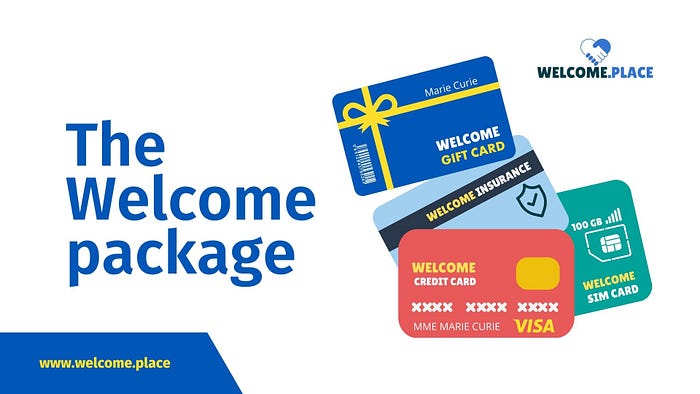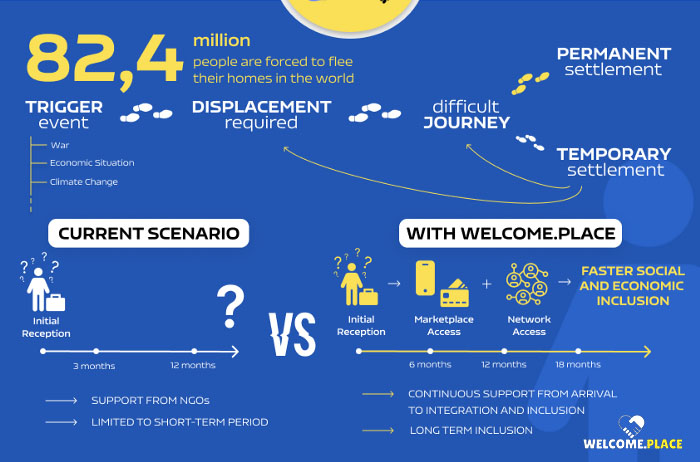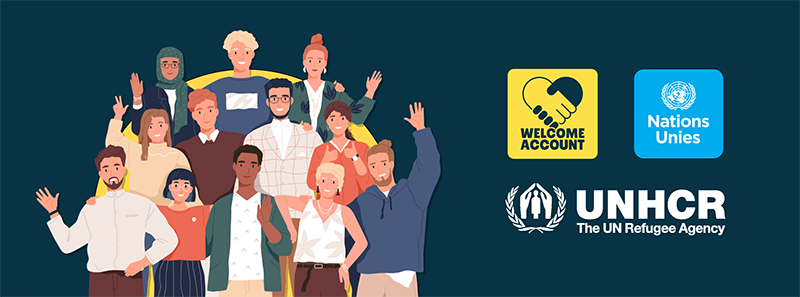What problem is Welcome.Place tackling?
MAIN CHALLENGE: Refugee crisis worldwide + limited long-term support for social and economic inclusion by NGOs and governments.
The number of refugees and immigrants worldwide has increased dramatically over the past decade. UNHCR's Global Trends 2020 indicates that at least 84.2 million people worldwide have been forced to leave their homes. Currently, one in every ninety-five people in the world has fled his or her home due to conflict or persecution. Due to the conflict in Ukraine, between 5 and 10 million Ukrainian refugees are expected in 2022. At the same time, 280,000 new refugees are arriving in Europe, along with 3 million non-European immigrants every year (students, workers, skilled workers, etc.).
Despite this mix of continuing arrivals due to economic migration and increasing arrivals due to the current crisis, we are faced with a lack of involvement and ongoing support from NGOs, governments and businesses for the long-term inclusion of refugees. In addition, there are no targeted support projects for new arrivals to facilitate their integration. More importantly, the focus is on the first three months or a short-term period, which means fragmented solutions. There are very few comprehensive solutions to which refugees can have access.
What does Welcome.place have to offer?
Welcome.Place aims to prepare and enable these people to integrate into society in order to promote social and economic inclusion. It is a curative marketplace that gives refugees and immigrants direct access to essential services such as a bank account, internet access, vocational training, job offers and more.

Welcome.Place's current offering includes 3 modules:
- Welcome Package: a basket of services to help them move forward more serenely. This package includes a SIM card with 100 GB of internet per month, liability insurance to protect them against unforeseen accidents, and a gift/prepaid card that enables them to buy products and services from our partners (Ikea, L'Oréal, Fnac, Carrefour etc.) free of charge or at a fair price. They can also receive donations via this same card.
- Integration: access to language courses, practical skills such as coding or painting, networking or finding new friends thanks to our matching algorithm, the opportunity to help others (for example, a Syrian teacher can help French students learn Arabic).
- Social and economic inclusion: all new arrivals can not only find sustainable employment opportunities, but also set up their own business throughout Europe, for example at SINGA with over 20 Start In Europe entrepreneurial programs, or Station F.
We are driven by a strong commitment to systemic change based on a people-centered approach. The Welcome Place infrastructure is a pioneering social innovation. The gift/prepaid card enables all citizens, as well as NGOs and companies, to donate money directly to refugees. It eliminates all unnecessary intermediaries who slow down the delivery of donations to the refugee's pocket. It reduces inefficiency and the risk of corruption. But at the same time, it increases the efficiency of services. It empowers the individual, not the bureaucracy.
Welcome.Place has an ambitious roadmap. The plan is to provide access to essential services to at least 50,000 refugees by 2023. The high estimate would even be to provide this service to the potential 5M Ukrainian and other refugees by the end of 2024. Over the next 5 years, Welcome.place aims to gain recognition for its platform in Europe and the USA. They want to create a level of awareness whereby new arrivals know and think about Welcome.place before they leave.
Why is the project important and what do we (Cardashift) like about it?
Firstly, Welcome.Place tackles one of the major crises of our century - the refugee crisis - which is set to continue growing. The UNHCR's most recent refugee statistics to mid-2021 indicate that there are 26.6 million refugees, and this number has been exacerbated by the current crisis in Ukraine. It is vital to note that more than half of all refugees are under the age of 18. Ensuring they have access to basic rights such as education, healthcare, employment and freedom of movement is vital to nurturing the next generation.
Secondly, Welcome.Place promotes mobility as an asset. People who cross borders and societies spread ideas, cultures and diversity. A growing number of studies indicate that diversity - openness to different cultures, religions and ethnicities - also plays an important role in economic growth. A working paper published by the National Bureau of Economic Research (2011) states that "the interplay between cultural assimilation and cultural diffusion has played an important role in the emergence of different patterns of economic development around the world." What's more, the project's solution is universal in scope and easily replicable.
The needs of refugees, non-European immigrants and all new arrivals are often similar. They need immediate access to essential services when they arrive in a host country, but the costs of acquiring these services often vary. Welcome.Place makes it easy for refugees to register, submit their documents and access services and direct discounts at a fair and reasonable price through the marketplace. The refugee is one click away from starting life in a new country with a complete package! This can include a bank card, a SIM card, insurance (civil liability, telephone), a gift card (reloading the card on the aforementioned platform with x% discount) and access to social/professional networks.
What are the main concerns? Are there any major negative externalities to consider for this project?
Welcome.Place's solution is based on a preliminary assumption that refugees have access to a mobile device and are able to access the platform easily. However, SINGA's 10 years' experience working with refugees in Europe has shown them that a smartphone is often one of the first investments new arrivals make. Because of the distance separating them from their country of origin, they need to communicate with their family or get news from home.
Refugees and immigrants may also lack the know-how to use the platform and may need in-person assistance to register, submit documents and learn how to track the progress of their application. Even though the refugee population is often young and digitally agile, it would make sense to develop the platform in users' own languages and an easy-to-use UX.
What's more, the marketplace cannot be a digital-only solution. It requires a strong support team on the ground to enable widespread adoption.
Finally, the integration of refugees is a global and complex issue. Any features of the marketplace that could lead to the exclusion of certain refugees need to be carefully addressed.
Follow-up questions? Would you like to speak directly to the founders?


